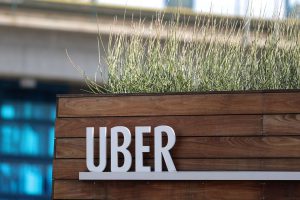
Uber Technologies Inc. is currently trying out a new algorithm in the U.S. which allows drivers to see pay and destinations before accepting a trip. It also raises their incentives to take short rides. All these is an effort to attract more drivers.
These changes are the most wide-ranging updates to Uber’s driver pay algorithm. They come at a time when the company is trying to fill the gap left by drivers who quit at the beginning of the pandemic. Consumer fares are not affected.
Uber previously resisted allowing drivers to see the fare and destination before accepting the trip, citing their reasons as drivers possibly discriminating against riders in disadvantaged neighborhoods.
Although Uber already has a similar program in California, the company stated that the latest update was not related to gig worker regulation. The test was carried out in cities in Florida, Texas and the Midwest where gig worker reforms are not applicable.
‘Gig work is very competitive, not just with Lyft, but other platforms, and we think this feature really enhances our platform’s competitiveness versus others,’ said Dennis Cinelli, Uber’s Head of Mobility in the U.S. and Canada. He also stated that the changes ‘aren’t financial features’.
Uber refused to comment on the financial impact of the updates on the company. Cinelli stated that the company had seen little to none discrimination by drivers in California since the policy was launched there in 2020.
‘Otherwise, we wouldn’t have rolled it out at this time,’ he said. He added that Uber could deactivate the accounts of drivers who consistently declined trips based on race or low-income neighborhoods.
According to Cinelli, providing drivers with upfront pay details meant the company had to reduce the income earned for longer trips, in order to prevent drivers from declining short trips.
Uber stated that data from cities with upfront pay showed a 22% average increase in driver earnings for trip in which the distance to pick up the passenger is longer than the actual trip.
In the online groups, driver responses varied. Some complained that the new algorithm was arbitrary and stopped them from calculating their earnings based on a per-mile basis.
‘My earnings are already destroyed by the high prices for gas and now Uber is taking even more money away from me on long trips,’ said Kevin Hernandez, a driver in Houston.
Other drivers however said the upfront fare information allowed them cherry-pick higher-paying rides.
‘If we’re not seeing it attract and retain drivers, we wouldn’t roll it out further,’ said Cinelli, implying that its expansion and permanence would depend on drivers.
By Marvellous Iwendi.
Source: Reuters